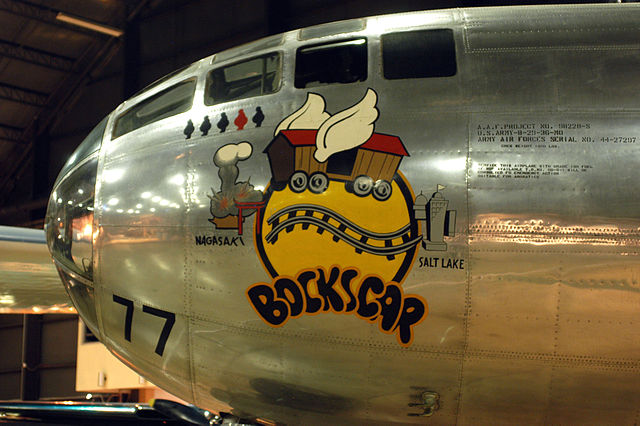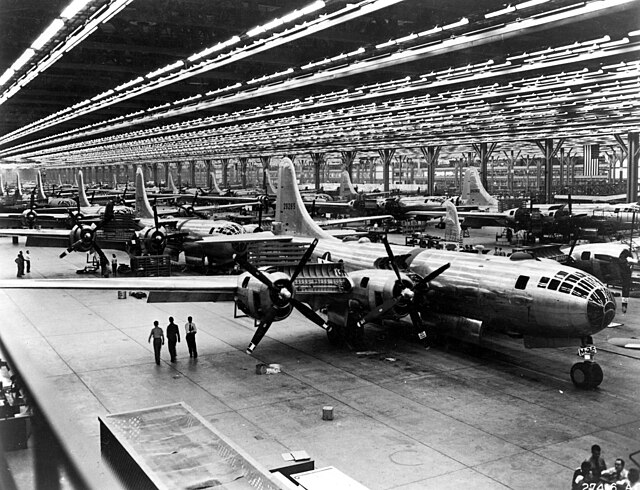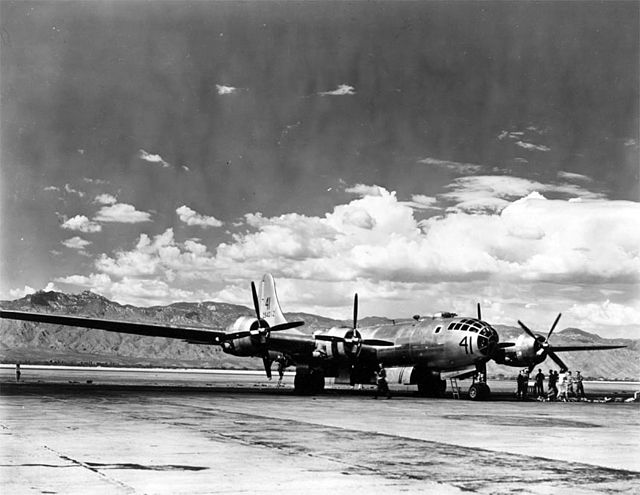Bockscar, sometimes called Bock's Car, is the name of the United States Army Air Forces B-29 bomber that dropped a Fat Man nuclear weapon over the Japanese city of Nagasaki during World War II in the second – and most recent – nuclear attack in history. One of 15 Silverplate B-29s used by the 509th, Bockscar was built at the Glenn L. Martin Aircraft Plant at Bellevue, Nebraska, at what is now Offutt Air Force Base, and delivered to the United States Army Air Forces on 19 March 1945. It was assigned to the 393rd Bombardment Squadron, 509th Composite Group to Wendover Army Air Field, Utah, in April and was named after captain Frederick C. Bock.
Bockscar
Bockscar at Dayton before it was moved indoors. On the Nagasaki mission, it flew without nose art, and with a triangle N tail marking, rather than the circle arrowhead shown here.
Bockscar with temporary triangle N tail marking, on 9 August 1945, the day of its atomic bombing mission
Preserved Tinian "bomb pit #2", where Fat Man was loaded aboard Bockscar
Boeing B-29 Superfortress
The Boeing B-29 Superfortress is an American four-engined propeller-driven heavy bomber, designed by Boeing and flown primarily by the United States during World War II and the Korean War. Named in allusion to its predecessor, the B-17 Flying Fortress, the Superfortress was designed for high-altitude strategic bombing, but also excelled in low-altitude night incendiary bombing, and in dropping naval mines to blockade Japan. B-29s dropped the atomic bombs on Hiroshima and Nagasaki, the only aircraft ever to drop nuclear weapons in combat.
Boeing B-29 Superfortress
Boeing assembly line at Wichita, Kansas (1944)
The length of the 141-foot (43 m) wing span of a Boeing B-29 Superfortress based at Davis-Monthan Field is vividly illustrated here with the cloud-topped Santa Catalina Mountains as a contrasting background.
YB-29 Superfortresses in flight








